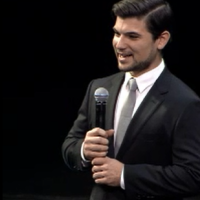Analytically Amazing, Visually Stunning
After some engaging conversations with our (very passionate!) customers on the Roadshow, I want to address a topic that frequently came up.
Can visualizations be visually stunning like a classic infographic, but remain steadfastly true to the principles of analytic visualization laid down so long ago by Minard, and codified by Tufte and Few? I could not be more adamant in believing this is possible, and I have chosen a viz to prove it with!
First of all, I want to note that this discussion is not in any way limited to a couple of discussions I have had with customers. It has also been an incredible lightening rod on the web, most notably on Stephen Few's blog. It seems the discussion is just as heated as any political debate... possibly more!
There are two main "religions" (and many small sects within them). Infographic supporters seem to generally believe the visual effect and beauty is the most important aspect of a visualization and will lead to increased interaction, exposure and usefulness for the viz. Practitioners of visual best practices (Tufte, Few, et al), seem to generally believe that the visual effect is only a side effect of an analytically useful visualization, and should not be sought on its own. Essentially, the analytical benefit of a viz is its reason for being and therefore its authors only goal is to empower analysis.
As a veteran Tableau Public user and devoted fan of Stephen Few, one might think I am firmly in the "best practices" camp. To be honest, I do lean that direction, but I also firmly believe in the power of a beautiful visualization and I enjoy reading David McCandless's blog as much as critiques of McCandless in our customer Andy Kriebel's blog. In short, I believe one cannot reach their potential with a publicly facing viz unless it is both analytically useful and visually stunning. No emphasis on either one. A viz needs to be beautiful to draw people in and engage them, but it also needs to be analytically valuable in order to serve a higher purpose than just beauty.
Let me show you a viz I believe proves this is possible and desirable. It was created by Adrian Abarca, who is a business and workforce data analyst and Tableau customer. However, like many of us he also has a passion for visualization and moonlights as an infographic/visualization creator. Take a look at his viz of provincial and municipal budgets in Spain below.
To ground this viz a little bit, Presupuesto is Spanish for budget, so the viz at the top left shows the percent of total budget for each autonomous community (cognates are helping me here I admit). Immediately it is clear that there is an enormous amount of the total budget going to Pais Vasco in the North. The highlight table on the right shows the same data, but for individual municipalities. On the bottom, you can see the initial forecast total revenue, total initial credits, and also total costs by division, which can be filtered by the other sheets.
I know at this point most people will be saying "But it's in Spanish!!". Indeed it is. That is actually a little bit of a shot over the bow towards the practitioners and believers in the visual best practices camp (of which I am one), who I think may sometimes resign beauty to the back seat. This viz may be in Spanish but even if you cannot read it, you are intrigued by it and desperately want to learn what it has to say. I went out and Google Translated this whole viz because its visual beauty drew me in and made me want to understand it. My point: analysis is incredibly important but if no one is drawn to the viz in the first place, who cares? People share and spread knowledge when they are engaged by it.
Of course, without the analysis there is no point for it to exist in the first place. Here are some reasons why this is an analytically useful viz:
- There are easy to read and well defined user-instructions to help with the interactivity
- The sums of the most important statistics are called out above the main visualization
- The outliers are clear in all the different sheets
- The highlight table is easy to read and more compact than a bar would have been
- The tooltips on the highlight table. Hover over anything for a clean and beautiful description
- The ? in the top right hand corner describes the viz in detail without cluttering the viz
There are things I would change as well, like the color of the title bars, making the titles a little bit larger, and grounding the color legend with numerical ramp endpoints. I might also want to realign the bottom viz horizontally to make the descriptions easier to read. As we all know, we can pick apart any viz because perfection is unattainable.
However, I think this viz proves the point that anyone with an interest can create an analytically useful and visually stunning viz. In fact, I believe they must in order to fully utilize the ability visualizations have to communicate with others. I am always a little disappointed when a viz fails to engage my emotional brain (beauty) and my analytic brain (viz best practices) at the same time... why should I have to go without either one? Do you agree? Need more evidence to make up your mind? Let me know what you think below.
Addendum: Perhaps this viz isn't your favorite? Check out the following analytically useful and visually stunning vizzes that corroborate the points above in a different form:
Relaterade berättelser
Subscribe to our blog
Få de senaste Tableau-uppdateringarna i din inbox.









